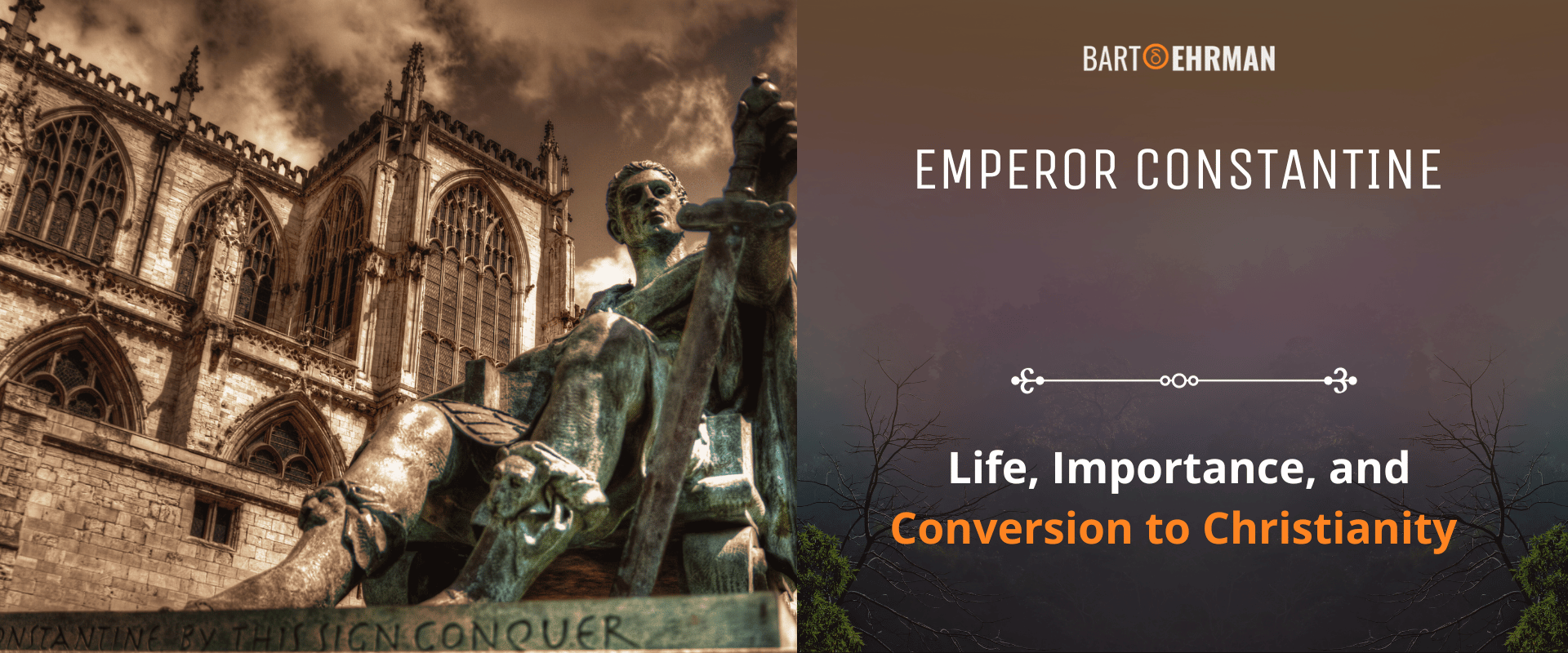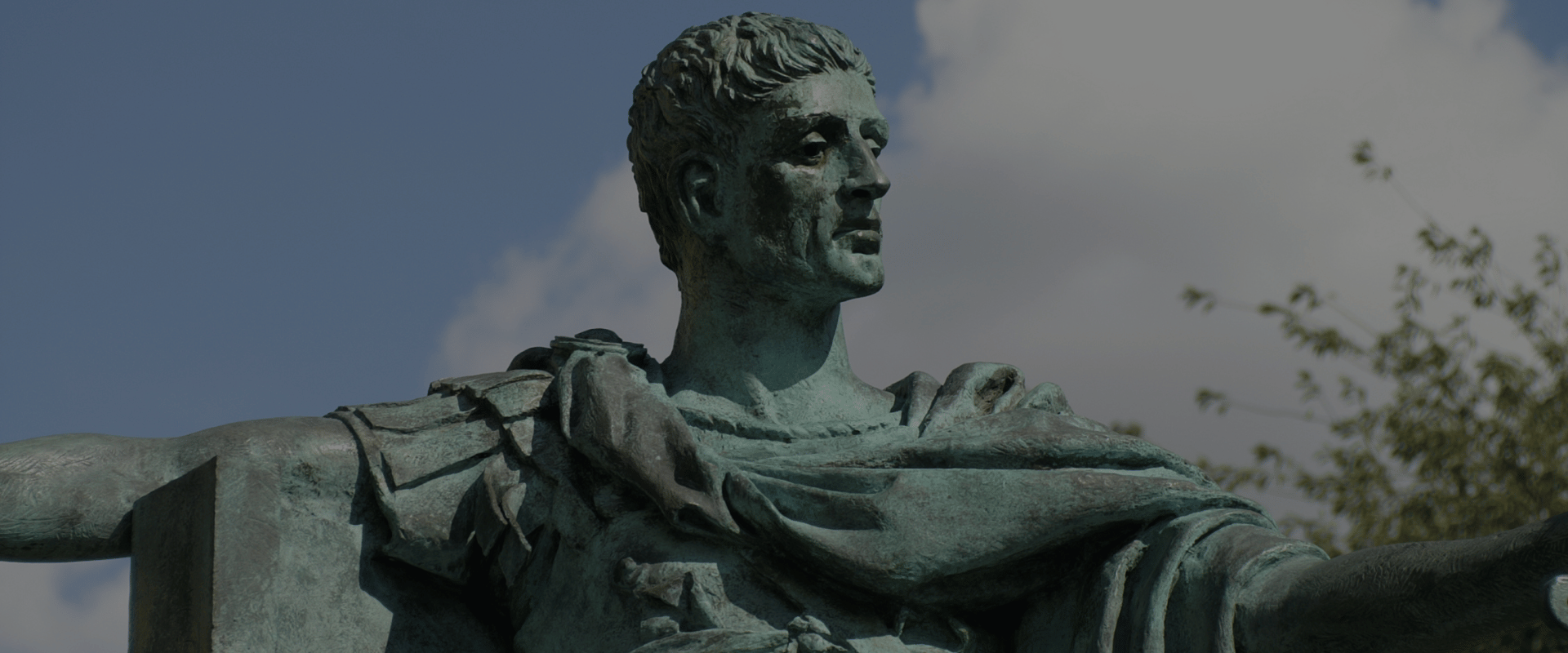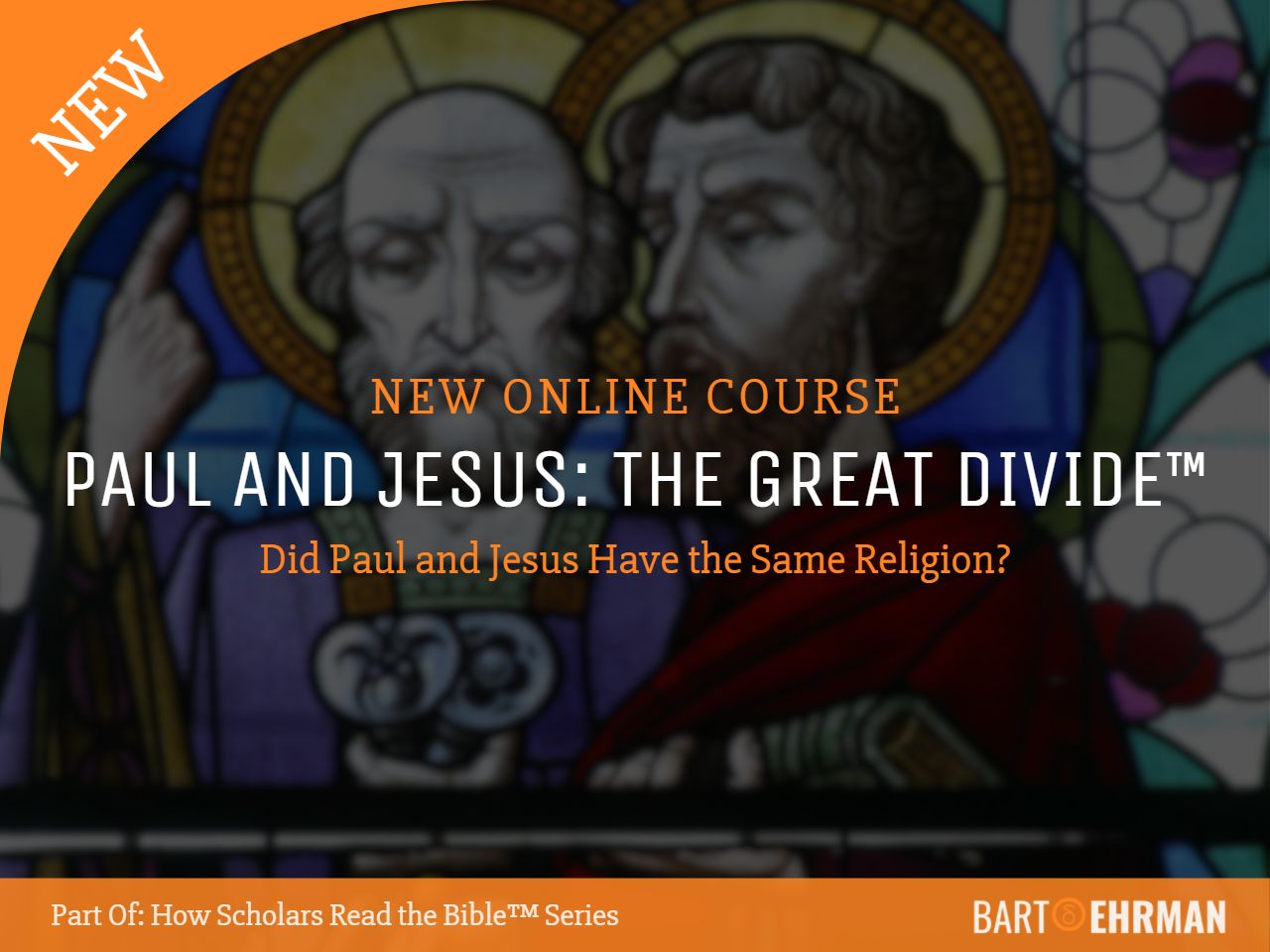Emperor Constantine: Life, Importance, and Conversion to Christianity

Written by Joshua Schachterle, Ph.D
Author | Professor | Scholar
Author | Professor | BE Contributor
Verified! See our editorial guidelines
Verified! See our guidelines
Date written: December 27th, 2023
Disclaimer: The views and opinions expressed in this article belong to the author and do not necessarily match my own. - Dr. Bart D. Ehrman
The emperor Constantine is one of the most important figures in the history of Christianity. He was the first Christian emperor and his reign signified a pivotal turning point in the religious landscape of the ancient world, transitioning from the pantheistic (belief in many gods) traditions of Rome to the endorsement of Christianity.
Emperor Constantine had a huge effect on both the welfare and the theology of what became orthodox Christianity. In this article, I’ll examine this highly significant but nevertheless controversial Roman ruler.

Constantine’s Birth and Early Life
According to Hans Pohlsander, Constantine was born on February 27 in a city called Naissus (modern-day Niš, Serbia). While early sources fail to tell us the year of his birth, his early biographer, a bishop and church historian named Eusebius, gives us some clues that lead historians to believe he was born sometime between 271-277 CE.
His father was Flavius Constantius, a nobleman and decorated soldier. During the reign of the emperor Diocletian, the empire was split and Constantius became a co-emperor, ruling over one part of the Western Roman Empire.
Constantine’s mother was named Helena. As Pohlsander notes, most scholars think she was probably not the legal wife of Constantius but rather a concubine. Unlike Constantius, she came from very humble beginnings. One source says that she was a barmaid when she met Constantius. While we can’t confirm that, we know she was not born into nobility because when Constantius was attempting to become emperor, he abandoned Helena and married the daughter of Roman emperor Maximian. As awful as that might sound, it was a common practice in ancient Rome.
Since Roman society was patrilineal, that is traced through the father rather than the mother, the young Constantine had to leave his mother and go to live in his father’s household. While we don’t know if Constantine was able to see his mother during those years, she would play an important part in his story later on.
He probably also didn’t see much of his father growing up, since Constantius was an officer in the Roman army and always traveling. However, after his father became an emperor, Constantine received a good education as a member of the ruling court.
Constantine the Conquering Soldier
Constantine's military prowess was a critical factor in his climb to power.
Like his father, Constantine became a Roman soldier, fighting to defend and expand the Roman Empire. He fought therefore against the Persians and some of the Germanic tribes in the Danube region. For many noble-born men, a successful military career was a step on the path to becoming emperor, a way of proving oneself as a conqueror and defender of the empire.
As Constantius was dying, he gave his approval for Constantine to succeed him as one of the co-emperors. Most of the areas under Constantius’ rule, as well as all the soldiers under Constantine’s command, accepted Constantine as their ruler. Constantine thus wrote to his co-emperor Galerius asking to be legitimized as an emperor. Galerius, realizing that to say no to such a popular figure might cause a civil war, reluctantly agreed.
Did You Know?
I should mention that there are several famous men named Constantine both in the real world and on the silver screen. For example, King Constantine II was the last king of Greece and ruled from 1964 to 1973. Then there was a demon-fighting character called Constantine upon which a 2014 TV series and a 2005 movie (starring Keanu Reeves) were based. All of these are completely unrelated to Constantine the Great, emperor of Rome.
Constantine the Emperor and Civil War
Constantine was in charge of Britain, Spain, and Gaul (modern-day France). However, without going into too many details, another co-emperor, Maxentius, wanted control over the regions Constantine controlled. Thus began a civil war, preemptively begun by Constantine himself who attacked Maxentius.
This all came to a head at the final battle at the Milvian Bridge in northern Rome. In this battle, Constantine defeated Maxentius, thus leading eventually to his becoming sole emperor of Rome. However, this battle was significant to Christianity for another reason.
Constantine’s Conversion to Christianity
The conversion of Constantine to Christianity is arguably the most pivotal aspect of his legacy.
We have two sources that tell us about Constantine’s conversion, both of whom say that it happened before the battle of the Milvian Bridge.
Our earliest source is Lactantius, an early Christian author who would become Constantine’s advisor. According to Lactantius, the night before the battle at the Milvian Bridge,
Constantine was directed in a dream to cause the heavenly sign to be delineated on the shields of his soldiers, and so to proceed to battle. He did as he had been commanded, and he marked on their shields the letter Χ, with a perpendicular line drawn through it and turned round thus at the top, being the cipher of Christ. Having this sign, his troops stood to arms.
The sign, by the way, was the Chi-Rho, which looked like this:

Image Source: Wikipedia
It consisted of the Greek letters X (pronounced “Key”) and Ρ (pronounced “Row”), the first two letters in the Greek spelling of “Christ.” With this symbol emblazoned on their shields, Constantine’s forces won the battle. Constantine, as a result, became a Christian. This symbol would continue to represent Christ for centuries.
A later source, the church historian Eusebius I mentioned earlier, said that the sign was a cross. However, what really matters here is that Constantine became the first Christian emperor which would have huge benefits for Christians and Christianity in the empire.
I should mention that while many have surmised that Constantine converted merely for political reasons, there is little definitive evidence to prove either his sincerity or the lack thereof.
So what did Constantine do for Christianity?
The Edict of Milan and the End of Persecution
After meeting with his co-emperor Licinius in 313 CE, Constantine issued the Edict of Milan which said that all persecution of Christians must end, that all property confiscated from Christians during persecution must be returned, and that all people in the Roman Empire were free to practice whatever religion they wanted.
That last sentence is important. It is commonly believed that Constantine made Christianity the official religion of the Roman Empire. In fact, this would not happen for several decades when the emperor Theodosius made it official.
For Constantine, all religions were to be tolerated, none persecuted. However, ending the persecution and even the possibility of further persecution during his reign was a huge gesture which certainly contributed to the growth of Christianity.

The Council of Nicaea and Influence on Christian Doctrine
While Constantine’s conversion to Christianity may have been sincere, he was still a political leader. He wanted unity in his empire.
While Christianity was now legal throughout the Roman Empire, there was a dizzying diversity of Christian beliefs and practices. In addition, there was no central Church structure so there was no way of definitively adjudicating theological arguments or even marking important Christian calendar events.
One of the more prominent unsettled theological arguments started in Alexandria, Egypt. A priest named Arius claimed that Jesus, since he had been created by God the Father, was subordinate to God rather than equal to him. While many agreed with this position, Alexander, the bishop of Alexandria, did not, claiming that Jesus was coeternal with God. He held smaller meetings of clergy in Alexandria to discuss the matter but nothing was ultimately resolved.
Constantine heard about this controversy and decided that this and other divisive issues needed to be resolved once and for all. Accordingly, he convened a synod or council of bishops in the city of Nicaea in modern-day Turkey in 325 CE. The bishops came from all over the Roman Empire, although due to the difficulty of travel in the ancient world, most came from the eastern regions nearer to Nicaea.
In his zeal to bring the church to unity, Constantine’s agenda at the council included the following issues: the Arian debate I mentioned above, controversy over the dating of Easter, and disputes over a schism called the Melitians (a group of Christians who believed that those who had renounced their faith under persecution shouldn’t be allowed to return).
Constantine didn’t really care which way the debates went, only that they were resolved and made official. In short, the council decided that Arius was wrong, as outlined by the subsequent Nicene Creed. It also decided on the dating of Easter and that the Melitians were wrong.
The losing sides of these issues didn’t just disappear overnight. But the positions taken at the council became the winning side under Constantine’s rule and many of those positions are still a part of Christianity today.
Constantine’s Bible: Did He Change It?
According to Eusebius, in 330 CE Constantine asked for 50 Bibles to be copied. Today we have two possible examples of these Bibles, Codex Sinaiticus and Codex Vaticanus (although we can’t know that for certain). A codex, by the way, was an early manuscript in book form.
These codices mostly conform to our modern-day canon, although not entirely. Still, while it is doubtful that Constantine himself had a lot of input into the canon, his ordering of the 50 copies forced some decisions about the canon to be made. This would impact Christianity for centuries.
Constantine’s Mother and Christian Pilgrimage
We don’t know anything about the life of Helena, Constantine’s mother, during the years she was separated from him. However, after he became emperor, Constantine brought his mother back to public life. He elevated her status and gave her unlimited funds in order to seek for Christian relics.
Helena therefore made a pilgrimage to Palestine between 326-328 CE, according to Eusebius and other ancient Christian writers. According to them, she was responsible for either building or just improving (depending on which source you read) the Church of the Nativity in Bethlehem and the Church of Eleona on the Mount of Olives where Jesus was said to have ascended to heaven.
Helena reportedly also found a piece of the True Cross, the actual cross upon which Jesus was crucified. As a result, Constantine would order the construction of the Church of the Holy Sepulchre on the site where she had found the wood, believed to have been the location of Jesus’ tomb.
While we can’t affirm these details with any certainty, we do know that Helena, as a result of her status, was responsible for establishing and popularizing the tradition of Christian pilgrimage.
Conclusion: Who Was Constantine the Great?
Constantine was the first Christian emperor of Rome. While he did not make Christianity the official religion of the empire, he did legalize it and end the persecution of Christians. It is possible that without this, Christianity would never have grown as it did.
In addition, he convened the Council of Nicaea at which several key theological and practical church issues were decided. These decisions would affect Christianity for the rest of its existence.
Moreover, by ordering 50 copies of the Bible to be made, Constantine may have forced some decisions to be made about which books to include (and exclude) from the canon. Obviously, these decisions would have an enormous impact on Christian belief and doctrine.
Finally, by financing his mother’s trip to Palestine, Constantine indirectly established the tradition of pilgrimage and the gathering of Christian relics, practices which would impact the Church for the rest of its life.
Constantine the Great FAQ
First, he made the persecution of Christians illegal. Second, he reorganized the Roman system of currency. Finally, he moved the capital from Rome to Constantinople.
Initially, he became a co-emperor in 306 CE. However, after winning a civil war against his co-emperors Maxentius and Licinius, he became sole emperor in 324 CE.
- He made Christianity legal in the Roman Empire.
- He moved the capital from Rome to Constantinople, a city he constructed.
- He convened the Council of Nicaea, standardizing church doctrine.
- Ordered 50 complete Bibles to be made, forcing decisions about the canon.
- Financed his mother’s trip to Palestine, indirectly establishing the tradition of Christian pilgrimage and relic veneration.
When his father, a co-emperor, was dying in 306 CE, he appointed his son to succeed him as co-emperor. However, after winning a civil war against his co-emperors Maxentius and Licinius, Constantine became sole emperor in 324 CE.
Old St. Peter’s Basilica, begun around 330 CE and finished about 30 years later. It was torn down in the 16th century and the current St. Peter’s Basilica was built on its foundation.
There were multiple co-emperors. In the West, there were Constantius I (Constantine’s father) and Maximian. In the East, there was Diocletian, followed by Galerius.
His 3 sons, Constantine II, Constantius II, and Constans I became co-emperors.
It is known as the Edict of Milan. It officially granted tolerance to Christianity and every other religion in the Roman Empire.


